NTSB blames poor track conditions for fatal 2021 Amtrak derailment

Worn and poorly maintained train tracks that were not properly inspected caused an Amtrak derailment that killed three passengers and injured 49 others in Montana in 2021, federal investigators said Thursday.
In the Sept. 25, 2021, derailment near Joplin, a remote section of north-central Montana, eight of the train’s 10 rail cars – with 165 people on board – went off the tracks, four toppling onto their sides.
The National Transportation Safety Board concluded in a final report that the track inspector’s workload probably “prevented him from performing a timely walking inspection of the track,” which is controlled by BNSF Railway. The report cites “a shortcoming” in BNSF’s safety culture and a lack of safeguards against high workloads and fatigue for safety-related employees.
Investigators also found that the passengers’ injuries were more severe because they were not restrained in the train cars and were ejected through windows. The NTSB is recommending higher standards to ensure that windows remain intact during an accident and that the Federal Railroad Administration researches ways to protect passengers from injury, including possibly installing seat belts.
“This tragedy is a powerful reminder that there’s no substitute for robust track inspection practices, which can prevent derailments by identifying track conditions that may deteriorate over time,” NTSB Chair Jennifer Homendy said in a statement.
The Empire Builder train was on its way from Chicago to Seattle with 149 passengers and 16 crew members when it derailed. Six passengers who were in the observation car were ejected from the train, according to the report. Killed were Marjorie and Donald Varnadoe, a Georgia couple on a cross-country trip to mark their 50th anniversary, and Zach Schneider, 28, a software developer from Illinois.
The crash caused more than $22.5 million in damage to Amtrak equipment and BNSF track and signals, according to the NTSB.
The report comes nearly two years after the derailment and as the nation has turned its attention to rail safety after a Norfolk Southern train derailed, causing a chemical spill in East Palestine, Ohio, six months ago. Since that incident, which drew national headlines for weeks, the U.S. Transportation Department has issued more safety measures and advisories, and called on Congress to update railroad laws. The NTSB is also investigating Norfolk Southern’s safety practices.
In the Montana derailment, investigators concluded that a combination of conditions on the BNSF track created a perfect platform for the disaster: Worn rail, vertical track deflection at a four-bolt rail joint and subgrade instability all contributed to the immediate derailment of Amtrak Train 7 as it traveled through a track misalignment.
During the 30 days leading up to the derailment, the inspector responsible for evaluating that section of track was tasked with covering between 32.9 miles and 132.5 miles of track, averaging about 73 miles per day, investigators found. In his last inspection of the derailment curve he was responsible for inspecting 126.8 miles of track.
Two days later the Amtrak train derailed, the report said.
“I implore track owners, who are responsible for the safety of their routes, to ensure inspectors have the time, support, and resources needed to do their work, which is essential to rail safety,” Homendy said.
BNSF spokeswoman Lena Kent said the railroad had not fully reviewed the findings, adding that it is “committed to safety.”
She said the railroad’s inspection process was compliant with federal requirements.
“BNSF inspections meet all federal requirements, and we are committed to timely maintenance, repair and replacement whenever issues or potential issues are detected,” she said in a statement.
Had a locomotive equipped with technology that tracks failures traveled the derailment curve that Sept. 25, it could have identified track problems and alerted BNSF Railway, the NTSB said. That safety move might have prevented the derailment, the NTSB said. The agency is recommending that the nation’s major freight railroads and intercity passenger railroads equip all trains with an autonomous monitoring system to detect track defects.
BNSF said before the report was released that it had begun installing inspection technology on locomotives and adding automated track inspections, which can alert the railroad of issues and prompt inspectors to inspect track more frequently than required by the federal government.
The report emphasizes previously issued recommendations to the Railroad Administration to develop higher standards for train windows that prevent openings and passenger ejections and look for ways to avoid passenger injuries, such as seat belts and better securing of luggage and other potential projectiles. The NTSB, an independent agency charged by Congress to investigate transportation accidents, can issue recommendations to federal agencies and railroads but has no authority to require them to take action.
The NTSB said the train on one of Amtrak’s more scenic long-distance routes was traveling just below the 79 mph speed limit when it derailed. Investigators found no mechanical issues on the train or failures from the train crew.
Amtrak Spokesman Marc Magliari said the rail carrier – the nation’s major provider of intercity passenger service – “will review the recommendations” of the NTSB.
“Amtrak will continue to work with all stakeholders to improve rail safety for the traveling public,” he said in an email.